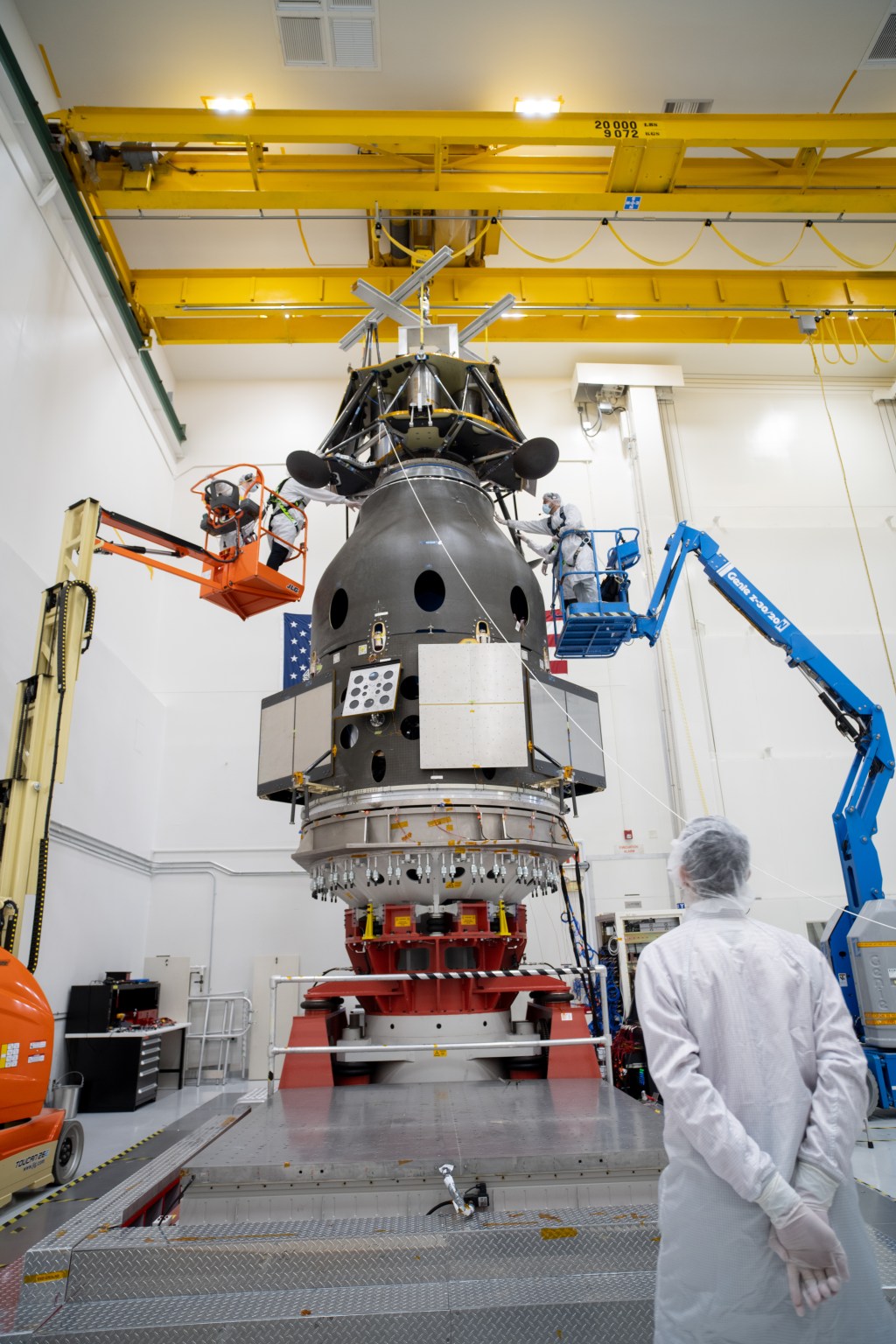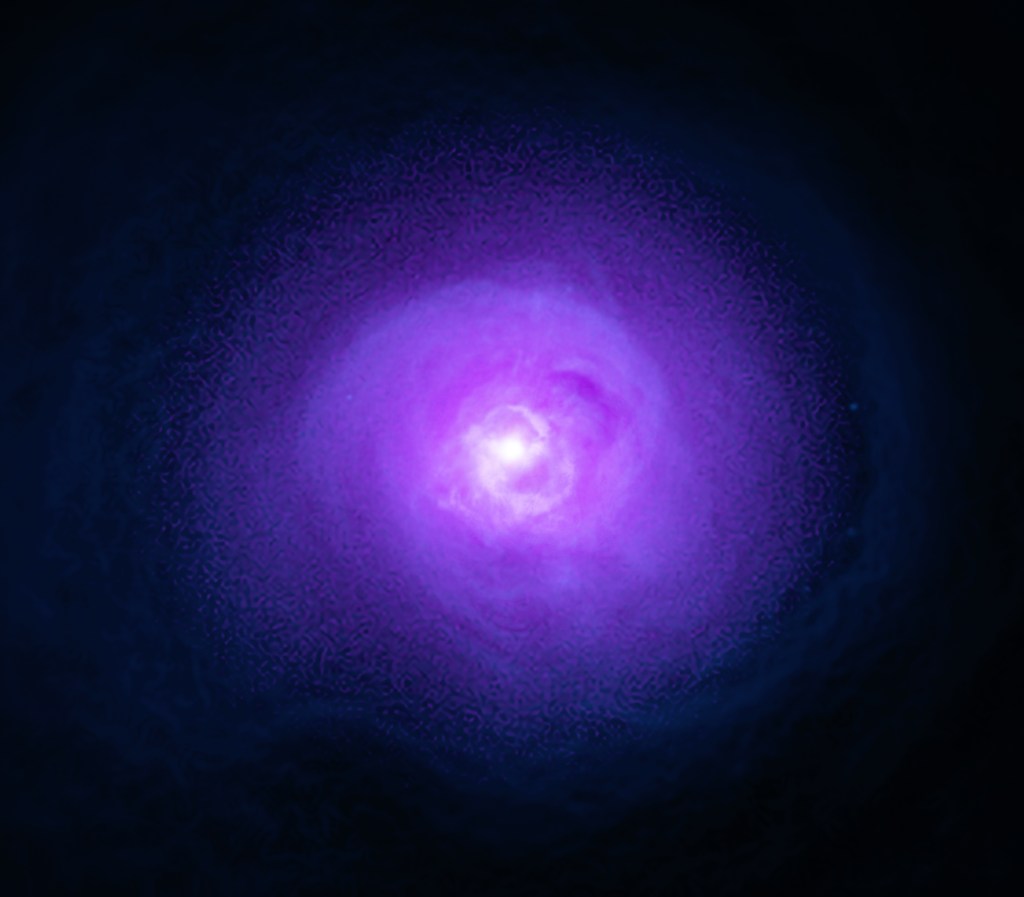1 min read
Black Hole Existed 570 Million Years After Big Bang (NIRSpec MSA Emission Spectrum)
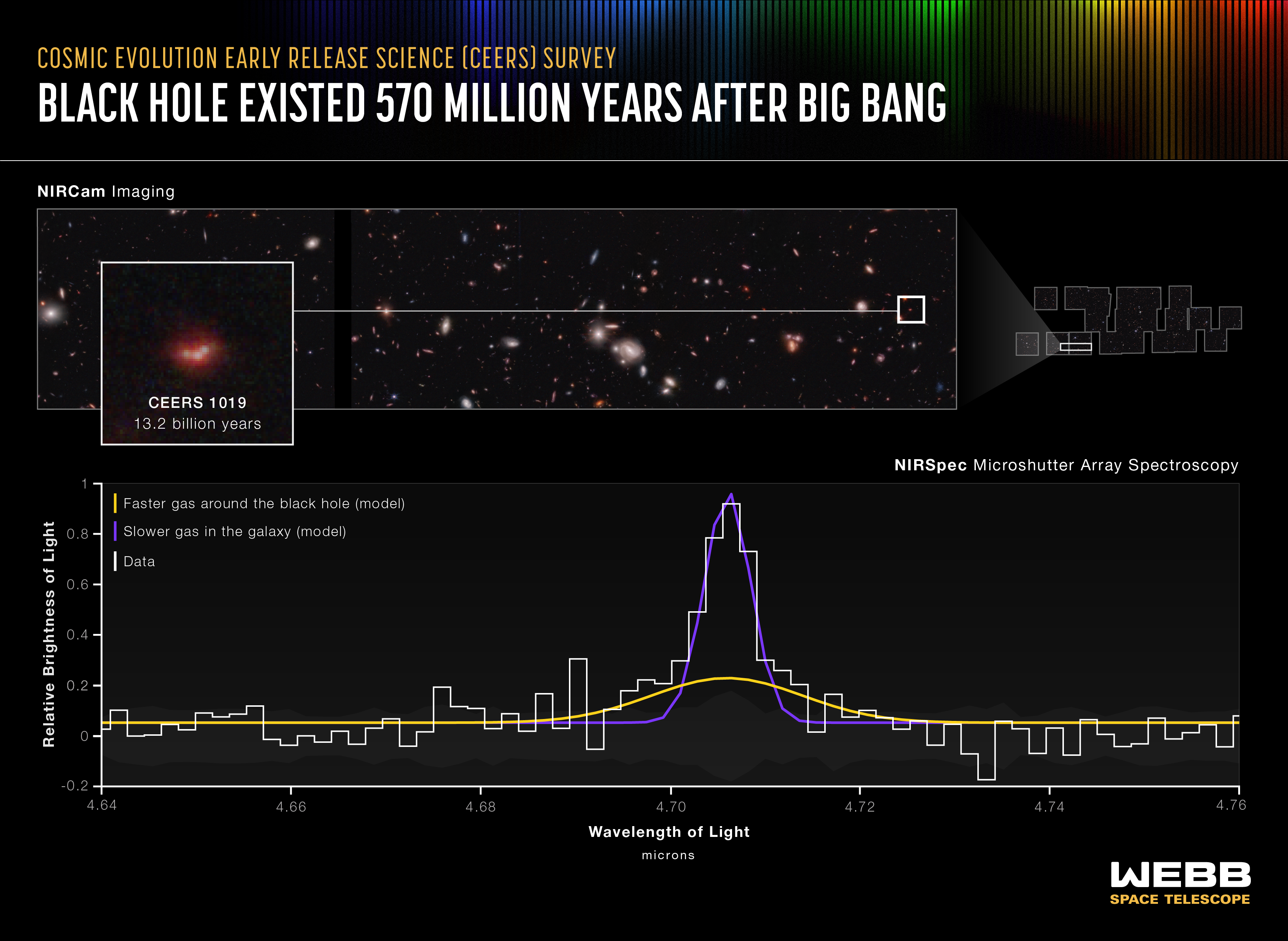
Researchers have identified the most distant active supermassive black hole to date in the James Webb Space Telescope’s Cosmic Evolution Early Release Science (CEERS) Survey. The black hole, within galaxy CEERS 1019, existed just over 570 million years after the big bang and weighs only 9 million solar masses. For context, the black hole at the center of our Milky Way galaxy is 4.6 million times the mass of the Sun, and other very distant supermassive black holes we’ve known about for decades weigh more than 1 billion times the mass of the Sun. (CEERS 1019 may only hold this record for a few weeks – claims about other, more distant black holes identified by Webb are currently being carefully reviewed by the astronomical community.)
Though small, CEERS 1019 is ravenous, consuming gas, dust, and stars at the highest theoretically possible rate for its size. Webb’s spectrum reflects it is fully focused on eating its “meal.”
Ready to explore the data? Find the white peak just past 4.7 microns. It represents hydrogen. Webb’s data are fitted to two models, because more than one source is responsible for the data’s shape. The broad model at the bottom, represented in yellow, fits faster gas swirling in the black hole’s active accretion disk. The purple model with a high peak fits slower gas in the galaxy – this is emission from stars that are actively forming.
The width of Webb’s oxygen detections, which are not shown on this chart, indicate that the stars in the surrounding galaxy have typical speeds for a massive galaxy. The team also confirmed additional detections of hydrogen, which were first found by researchers using the Hubble and Spitzer space telescopes, and was also identified in data from the W. M. Keck Observatory. Webb’s data are so clear that they were able to confirm the presence of the black hole. The data can also prove that the black hole is emitting a lot of light – and that gas is speeding around the black hole.
What Larson appreciates most is how incredibly consistent Webb’s data are. “We have data about this object from all four of the telescope’s instruments and all of its information is telling the same story – that a young, lower mass black hole is present,” she explained.
This result is also exciting because of the additional discoveries that may soon be reported. “Detecting smaller active supermassive black holes at the early times in the universe may become a little bit more common than we expected with this telescope,” said Rebecca Larson of the University of Texas at Austin, who led this discovery.
Webb’s microshutter array aboard NIRSpec (its Near-Infrared Spectrograph) produced the highly detailed spectra above.
NIRSpec was built for the European Space Agency (ESA) by a consortium of European companies led by Airbus Defence and Space (ADS) with NASA’s Goddard Space Flight Center providing its detector and micro-shutter subsystems.
Extended Description and Image Alt Text
Extended Description
An infographic titled “Cosmic Evolution Early Release Science (CEERS) Survey, Black Hole Existed 570 Million Years After Big Bang.”
Reference Image
In the top row, at the far right is an outline made up of a patchwork of squares labeled NIRCam imaging. A large horizontal pull out of a region within CEERS appears over most of this row. It contains galaxies of different colors, shapes, and sizes.
Inset Image
An open white box is at far right. A line extends to a zoom of this area at far left. It shows a large central red dot and two slightly lighter, light green dots cast in a red glow to its left and right. The red dots are labeled CEERS 1019, 13.2 billion years.
Graph
The bottom portion of the graphic shows a single line graph, a spectrum of CEERS 1019 data. It is labeled NIRSpec Microshutter Array Spectroscopy.
Graph Axes
The graph shows relative brightness of light on the y-axis, and has labels for -0.2, 0, 0.2, 0.4, 0.6, 0.8, and 1. Wavelength of Light in microns is shown on the x-axis, and has labels for 4.64, 4.66, 4.68, 4.70, 4.72, 4.74, and 4.76.
Graph Data
A legend at the top of the graph shows three tiny vertical lines, which mirror the graph content. The yellow line is labeled faster gas around the black hole (model). The purple line is labeled slower gas in the galaxy (model). The white line is labeled data.
The graph shows a white jagged line of data plotting the brightness of CEERS 1019. It shows a prominent spike-like peak just past 4.70 microns. The first model in yellow has a low wave, at 0.2 on the y-axis and after 4.7 microns on the x-axis. The second model, represented by a purple line, has a high peak to match the white data, just past 4.70 microns, reaching to the 1 tick mark on the y-axis.
Image Alt Text
A graphic titled “Cosmic Evolution Early Release Science (CEERS) Survey, Black Hole Existed 570 Million Years After Big Bang.” The graphic, a spectrum, plots the redshift of one active supermassive black hole.
- Release DateJuly 6, 2023
- Science ReleaseWebb Detects Most Distant Active Supermassive Black Hole to Date
- CreditImage: NASA, ESA, CSA, Leah Hustak (STScI); Science: Steve Finkelstein (UT Austin), Rebecca Larson (UT Austin), Pablo Arrabal Haro (NSF's NOIRLab)
Related Images & Videos

Cosmic Evolution Early Release Science (CEERS) Survey (NIRCam Image)
Stare deeply at this vast landscape. It was stitched together from multiple images captured by the James Webb Space Telescope in near-infrared light – and it is practically pulsing with activity. To the right of center is a clump of bright white spiral galaxies that seem to be...
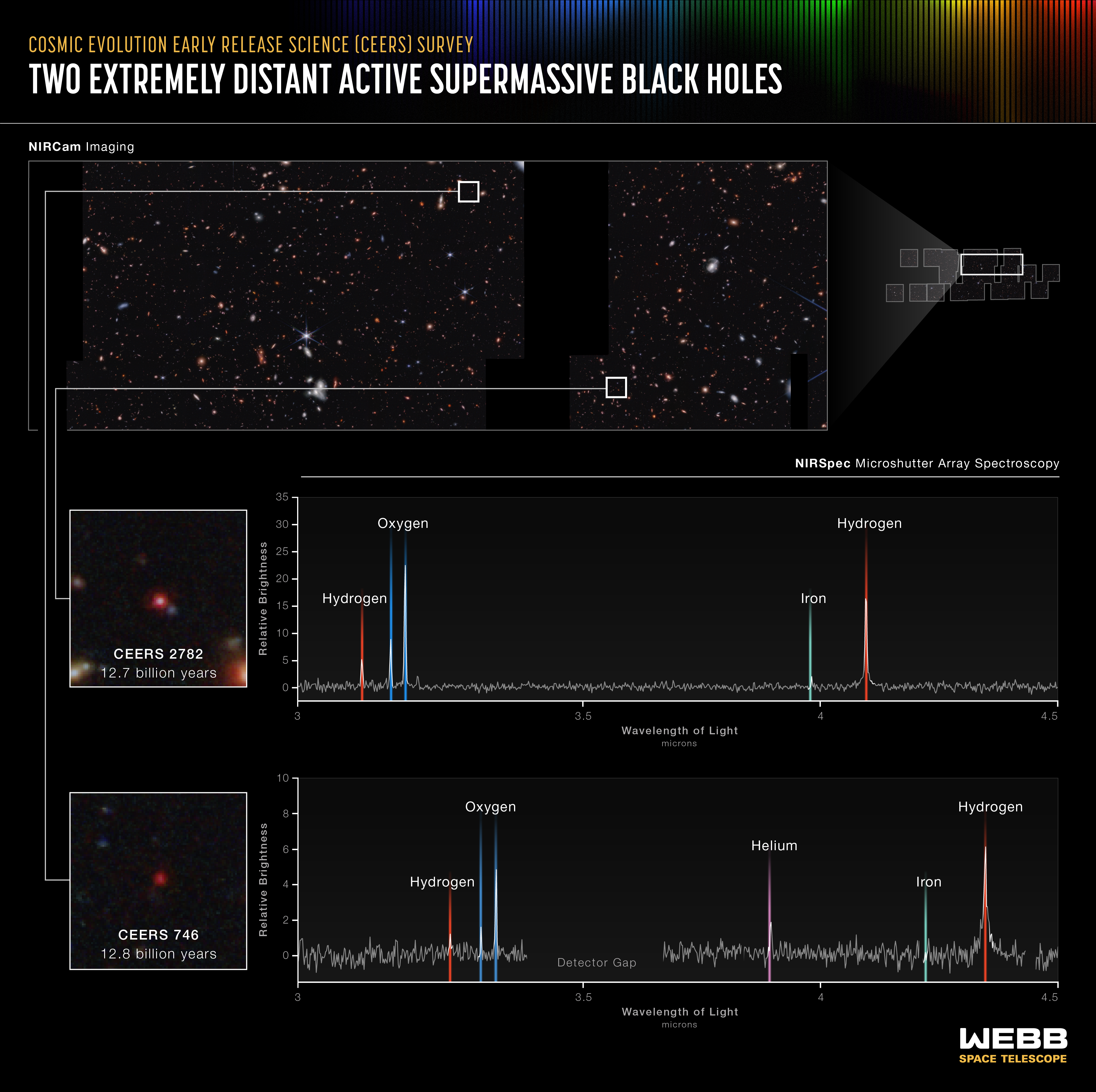
Two Extremely Distant Active Supermassive Black Holes (NIRSpec MSA Emission Spectra)
Researchers using data and images from the James Webb Space Telescope have already captured two of the smallest known supermassive black holes in the early universe. Webb’s spectra show that these black holes weigh only 10 million times the mass of the Sun. Other very distant...
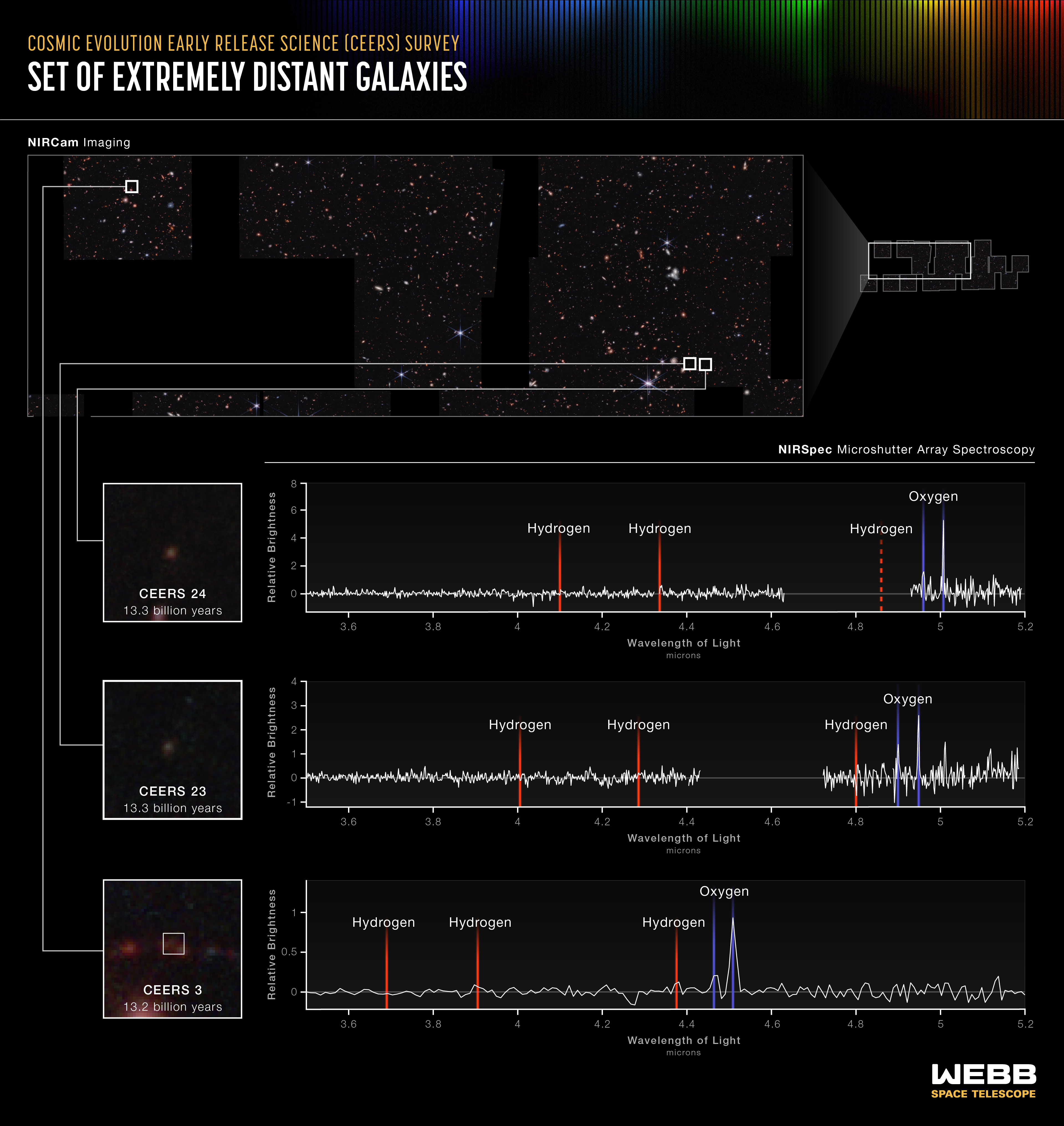
Set of Extremely Distant Galaxies (NIRSpec MSA Emission Spectra)
A team investigating data from Webb’s Cosmic Evolution Early Release Science (CEERS) Survey has already identified seven galaxies that existed when the universe was only 540 to 660 million years old. Some of the evidence is displayed above: Three lines appear in the same order –...
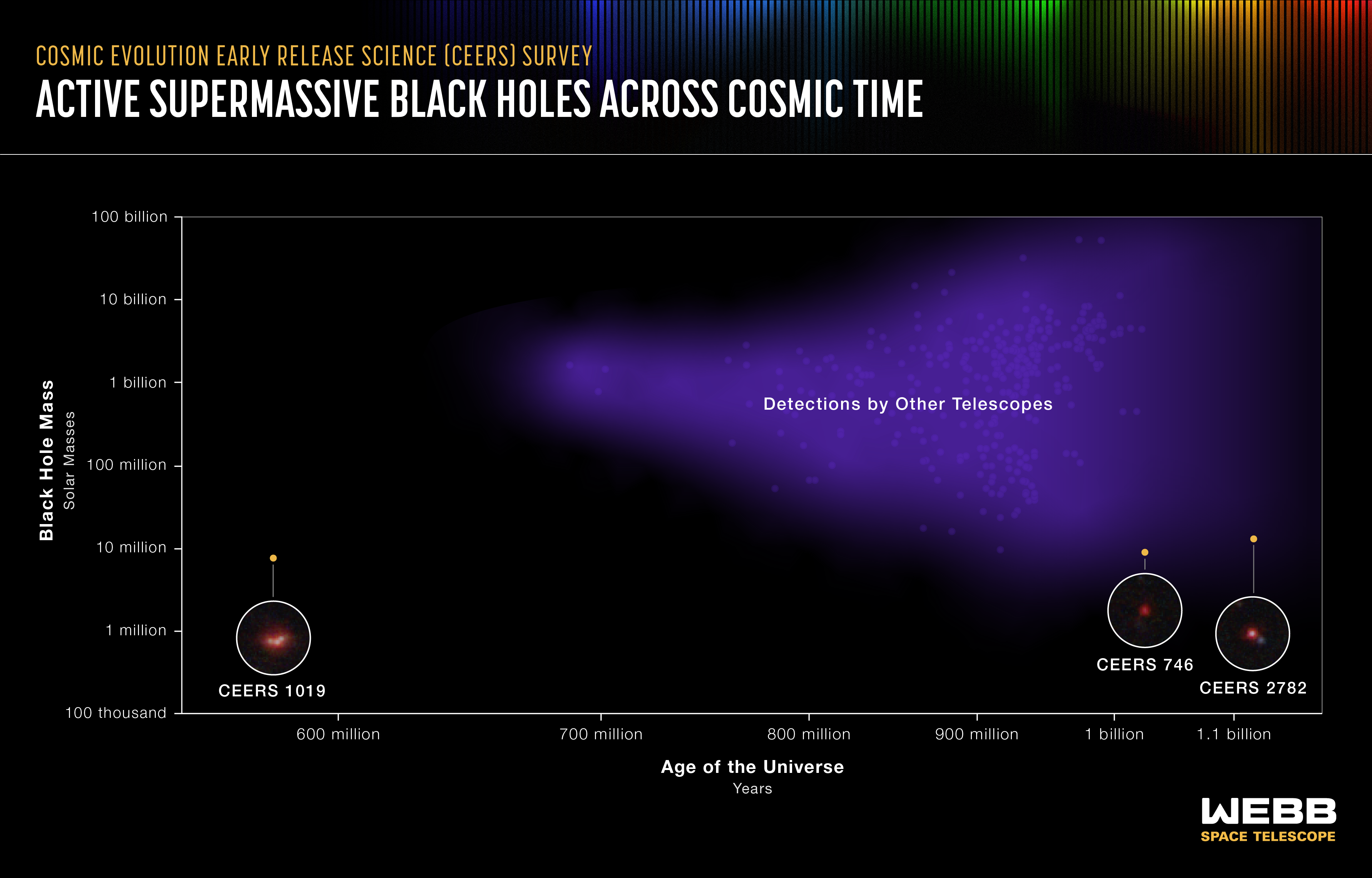
Active Supermassive Black Holes Across Cosmic Time
This graphic shows detections of the most distant active supermassive black holes currently known in the universe. They were identified by a range of telescopes, both in space and on the ground. Three were recently identified by in the James Webb Space Telescope’s Cosmic...
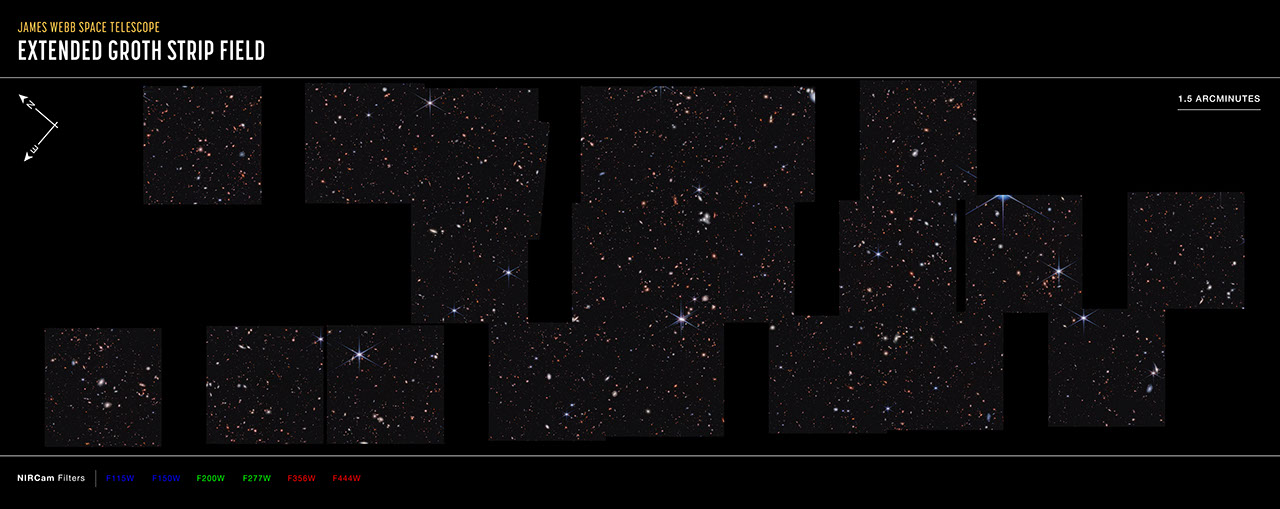
Cosmic Evolution Early Release Science (CEERS) Survey (NIRCam Compass Image)
Ten near-infrared pointings from NIRCam (the Near-Infrared Camera) aboard the James Webb Space Telescope were stitched together to create this mosaic, known as the Cosmic Evolution Early Release Science (CEERS) Survey. These observations are within the same region studied by the...
Share
Details
Laura Betz
NASA’s Goddard Space Flight Center
Greenbelt, Maryland
laura.e.betz@nasa.gov
NASA, ESA, CSA, Leah Hustak (STScI)
Steve Finkelstein (UT Austin), Rebecca Larson (UT Austin), Pablo Arrabal Haro (NSF’s NOIRLab)













